The project of The Snow Queen has been kicking around the Disney studios since the golden age of Walt Disney himself. Legendary Imagineer Marc Davis had even developed concepts for a boat ride at Disneyland which would have taken guests on a journey through the Ice Queen’s chilly arctic lair. But as time marched on, those ideas were all archived and tucked away.
It wasn’t until about four years ago that Director Chris Buck (Tarzan) and Jennifer Lee (Co-writer, Wreck-It-Ralph) were handed the project with the hopes of seriously developing The Snow Queen, by Hans Christian Anderson, into a film.
They began their research into the archives of Walt Disney Studios hoping to find any inspiration that was developed in-house first. The leads they had were cold (pun intended). The pair had only the art from Davis, the story from Anderson and scant notes from within the company to use in creating the next big hit. Oh, and did we mention they had a year shaved off of the production schedule? The demands were big and the expectations were high. But they soldiered on and began to develop their own version of the fable that would hopefully play well with today’s audiences.
The Story
The new story centers around Anna and Elsa, two princesses from the kingdom of Arendelle. Anna is the younger free-spirited one, while Elsa was born with the magic power to create ice. One day while the two girls are playing, Elsa accidentally strikes her sister with her chilling powers and Anna becomes dangerously cold. The parents rush in and realize what has happened. The king and queen decide to take the girls to see the trolls.
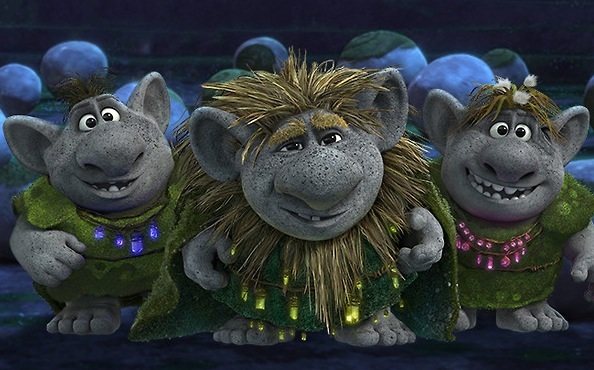
The trolls are able to cure Anna and remove any memory of the near fatal accident. However, they advise the parents to separate the two girls for their mutual safety. They also warn that Elsa’s frigid powers will only grow stronger as she gets older and she must learn to control them.
To produce the film, Chris Buck and Jennifer Lee had to assemble a stable of capable individuals who could get the job done in time for the rushed release date. The tight schedule proved to be an exhausting one but they actually pulled it off.
The Look of the film
Elegance was something that Art Director Michael Giaimo really wanted to strive for when creating the aesthetic feel for what the creative team refers to as “the show”. According to them, Lasetter was always pushing research, research, research. The upside to all of the work is that the film makers traveled around the world to Canada, Wyoming, and Norway in order to get a feel for cold landscapes and the people who inhabit them.
When the story began to take real shape about a year and a half ago, Giaimo knew that he was going to pull his major inspirations in Norway. The first big take away were the fjords, with their striking, vertical, spires, their textures, and the way the light hit them at different times of day. There is no place in the world like it and it lent the perfect majestic look of the landscape he was aiming for.
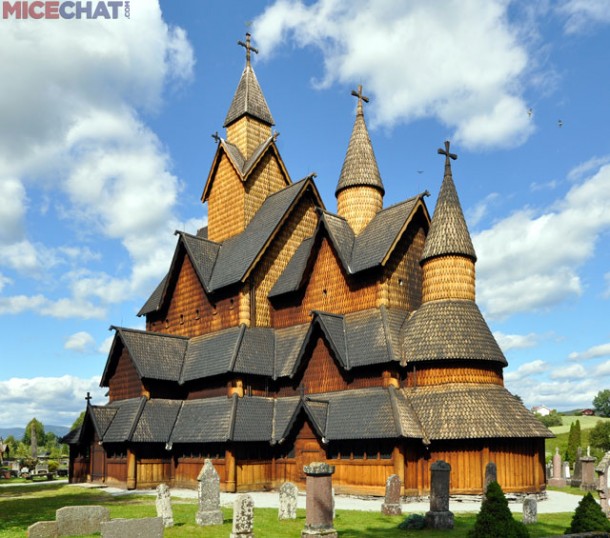
The next norwegian element that offered inspiration was the centuries-old architecture. The stave churches, built around 1160-1200’s are some of the most ancient structures on the planet, yet they have surprisingly complex rooflines and decorative flourishes. Lasetter was a big proponent of actually taking these features and using them in the design of Arendale’s castle.
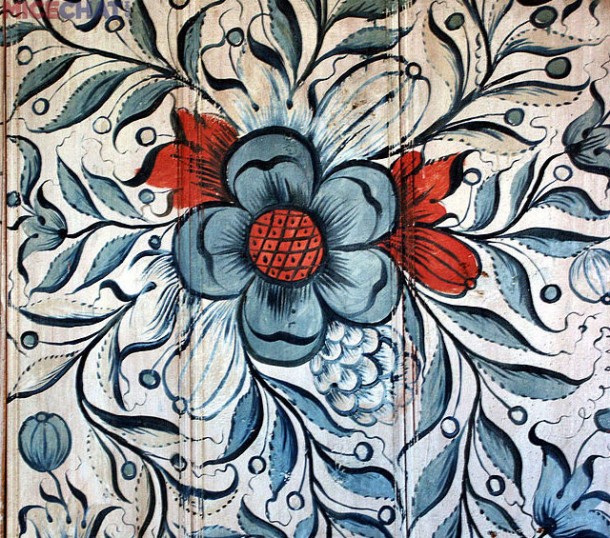
The third and final visual inspiration for the film was the use of the Norwegian folk art of Rosemaling. It’s a highly decorative , almost cursive yet geometrical design that can literally be put on anything. Wallpaper, rooflines, clothing, drapery, it works everywhere and appears throughout the film to support the idea of a more polished and refined kingdom.

Costuming was also a major consideration for this film. Since the story takes place in a cold environment, the characters were going to require layers upon layers of clothing. In fact this may be the biggest collection of costumes ever designed for an animated feature. The variety of textiles, patterns and textures for each layer on each character was carefully designed to give each individual a unique look. In the name of research, after the general idea for the costumes were created, the animators took trips out to Wyoming and trudged around in the snow in heavy dresses. This was to give the folks working with the designs a first hand idea of how the fabric should move and behave on the animated figures. Yes, the male animators wore dresses too.
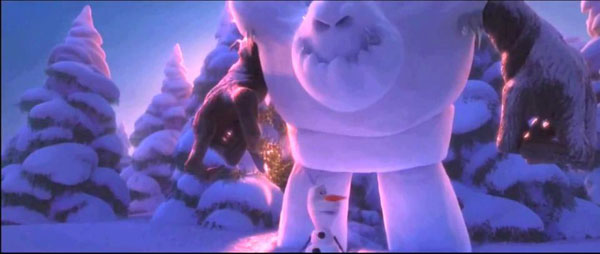
Ironically, the color palette for the film is highly saturated. Even though the landscape is covered in white, they use vibrant tones of magenta, turquoise and warm, yellows and oranges to bathe the landscape in pigment. That, along with the brilliance of the costumes, will give this film a colorful look despite the stark setting.

Story Development
The original pitch was very similar to the original tale. In fact it was a sort of streamlined version of the Hans Christian Anderson tale. It featured two women as the leads, but something was missing. It was at that time that one of the writing team suggested the Snow Queen and the protagonist be sisters and suddenly the emotional core of the film was found. A familial tie lent weight to the existing conflict that many could identify with.

In the original story the Ice Queen was very stoic. But there was Gerda who represented Love and kindness and then Kai, who represented fear and negativity. It was a sad realization that these characters might not work as they were written. So they applied the fear and negativity to Elsa’s character and the love and understanding to Anna’s character. Changes, yes, but ones that they hoped carried more emotional impact.
It’s a Musical?
In the same vein as Tangled, music was desired to drive the movie and the plot twists. During the tumultuous evolution of the project, Alan Menken and Glen Slater left the film. This left the team with a gaping hole where a story telling device was needed. After a quick trip to Broadway, Christan Anderson and Bobby Lopez, who worked on both Book of Mormon and Avenue Q, were brought in for their story driven music and lyrics. The chemistry was instantly there and production continued.
Technical Choices
As the production developed, the debate between 2D and CGI animation raged on. That is, until Tangled was released in theaters. That surprise hit, based on the story of Rapunzel, proved that it was possible to carry a comedy movie musical that retained a consistent emotional center. The writing was on the wall and hand drawn gave way to computers.
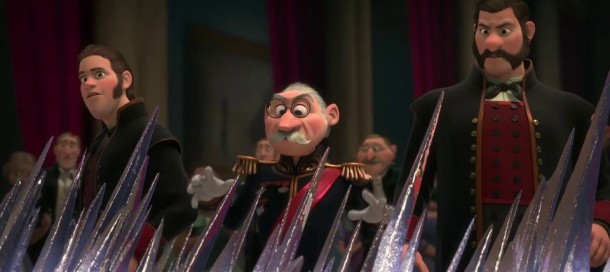
However, the studio maintains that the choice made was exclusively story driven. Had 2D proven a better way to convey the emotions and look of the film it would have been used apparently. But, that is a moot point now as the film is one week away from release and many have already seen the finished product. We can say, though, that what we saw, lived up to the expectations we had. The characters were alive, filled with minor quirks and nuances that were charming and human.
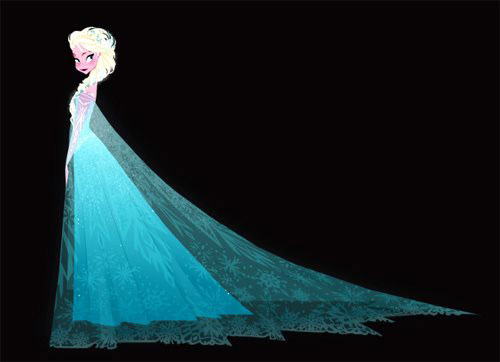
Despite the creative hurdles, story changes, and the rushed production schedule, will movie goers line up to see the latest from Disney? All will be revealed when Frozen is released on November 27th. Our prediction is that this film will be just as big as Tangled. And you can bet that tens of thousands of little girls will be lining up in the parks for a picture with Anna and Elsa.


You must be logged in to post a comment.